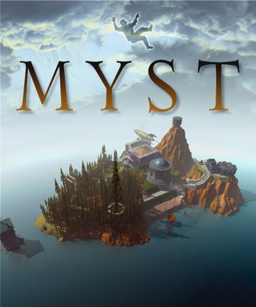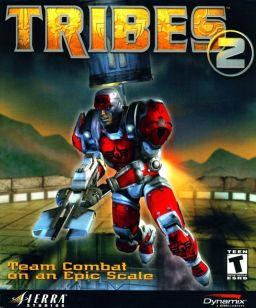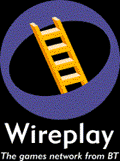
Quake III Arena is a 1999 multiplayer-focused first-person shooter developed by id Software. The third installment of the Quake series, Arena differs from previous games by excluding a story-based single-player mode and focusing primarily on multiplayer gameplay. The single-player mode is played against computer-controlled bots. It features music composed by Sonic Mayhem and Front Line Assembly founder Bill Leeb.

The history of video games began in the 1950s and 1960s as computer scientists began designing simple games and simulations on minicomputers and mainframes. Spacewar! was developed by Massachusetts Institute of Technology (MIT) student hobbyists in 1962 as one of the first such games on a video display. The first consumer video game hardware was released in the early 1970s. The first home video game console is the Magnavox Odyssey, and the first arcade video games are Computer Space and Pong. After its home console conversions, numerous companies sprang up to capture Pong's success in both the arcade and the home by cloning the game, causing a series of boom and bust cycles due to oversaturation and lack of innovation.

Myst is a graphic adventure designed by the Miller brothers, Robyn and Rand. It was developed by Cyan, Inc., published by Broderbund, and initially released in 1993 for the Macintosh. In the game, the player travels via a special book to a mysterious island called Myst. From there, solving puzzles allows the player to travel to other worlds ("Ages"), which reveal the backstory of the game's characters and help the player make the choice of whom to aid. The player interacts with objects and walks to different locations by clicking on pre-rendered imagery.

Unreal Tournament is a first-person arena shooter video game developed by Epic Games and Digital Extremes. The second installment in the Unreal series, it was first published by GT Interactive in 1999 for Windows, and later released on the PlayStation 2 and Dreamcast by Infogrames in 2000 and 2001, respectively. Players compete in a series of matches of various types, with the general aim of out-killing opponents. The PC and Dreamcast versions support multiplayer online or over a local area network. Free expansion packs were released, some of which were bundled with a 2000 re-release: Unreal Tournament: Game of the Year Edition.

Tribes 2 is a first-person shooter multiplayer video game developed by Dynamix and published by Sierra On-Line in 2001 as a sequel to Starsiege: Tribes.

Steam is a video game digital distribution service and storefront from Valve. It was launched as a software client in September 2003 to provide game updates automatically for Valve's games, and expanded to distributing third-party titles in late 2005. Steam offers various features, like digital rights management (DRM), game server matchmaking with Valve Anti-Cheat measures, social networking, and game streaming services. Steam client's functions include game update automation, cloud storage for game progress, and community features such as direct messaging, in-game overlay functions and a virtual collectable marketplace.

Worms Armageddon is a 1999 turn-based strategy video game developed and published by Team17. It was originally released for the Microsoft Windows operating system, and was later ported to the PlayStation, Dreamcast, Nintendo 64, and Game Boy Color. Worms Armageddon is the third installment in the Worms series. In the game, the player controls a team of up to eight earthworms tasked with defeating an opposing team using a wide range of weapons at their disposal. The game takes place on a destructible and customizable two-dimensional board and is characterized by cartoonish graphics and a unique brand of humour.
NovaLogic, Inc. was a software developer and publisher established in 1985 and based in Calabasas, California. The company was founded by CEO John A. Garcia. Garcia's background in computer software started in Southern California in the early 1980s, when he worked at Datasoft. The company was known for their Voxel Space engine, which was utilized in franchises such as the Comanche and Delta Force series. In October 2016, NovaLogic's assets were bought out by THQ Nordic and is currently an inactive label for the company.
A personal computer game, also known as computer game or abbreviated PC game, is a electronic game played on a personal computer (PC) and form of video game. They are defined by the open platform nature of PC systems.

Plusnet plc is a British triple play internet service provider (ISP) providing broadband, landline and mobile services. The company was founded in 1997 in Sheffield, England, and became a public limited company (plc) in July 2004 when it was floated on the Alternative Investment Market. On 30 January 2007, Plusnet was acquired by BT Group, but it continues to operate as a separate business. By December 2013, it had over 750,000 customers across the UK.

Vietcong is a 2003 tactical first-person shooter video game developed by Pterodon in cooperation with Illusion Softworks and published by Gathering for Microsoft Windows. It is set during the Vietnam War in 1967.

The Dreamcast is a home video game console by Sega, the first one introduced in the sixth generation of video game consoles. With the release of the Dreamcast in 1998 amid the dot-com bubble and mounting losses from the development and introduction of its new home console, Sega made a major gamble in attempting to take advantage of the growing public interest in the Internet by including online capabilities in the console as a selling point. As such, the Dreamcast was the first console to include a built-in modem for Internet support and online play. Sega would end up leaning heavily into the online capabilities to sell the Dreamcast as hype grew for Sony's then-upcoming competitor, the PlayStation 2, which also promised online gaming in addition to its DVD capabilities.

Games for Windows – Live or GFWL was an online gaming service used by Games for Windows–branded PC titles that enables Windows PCs to connect to Microsoft's Live service. Users, each with a unique Gamertag, are able to play online, keep track of their friends' status, send and receive messages, gain and keep track of Achievements and associated Gamerscore, voice chat across platforms, and more. Some games allow for cross-platform play, such as Shadowrun, putting Windows players against Xbox 360 players.
This is a list of video game accessories that have been released for the Game Boy handheld console and its successors. Accessories add functionality that the console would otherwise not have.

Burnout Paradise is a 2008 open world racing video game developed by Criterion Games and published by Electronic Arts for PlayStation 3, Xbox 360 and Microsoft Windows. It was also released on the PlayStation Store and via Xbox Live Marketplace's Games on Demand. It was later added to the libraries of Greatest Hits and Platinum Hits titles and was made backward compatible with the Xbox One in November 2016. It is the first game in the Burnout series to be released on Microsoft Windows.

OnLive was a provider of cloud virtualization technologies based in Mountain View, California. OnLive's flagship product was its cloud gaming service, which allowed subscribers to rent or demo computer games without installing them. Games were delivered as streaming video rendered by the service's servers, rather than running on the local device. This setup allowed the games to run on computers and devices that would normally be unable to run them due to insufficient hardware. OnLive also enabled other features such as the ability for players to record gameplay and to spectate.

Minecraft is a 2011 sandbox game developed by Mojang Studios. The game was created by Markus "Notch" Persson in the Java programming language. Following several early private testing versions, it was first made public in May 2009 before being fully released in November 2011, with Notch stepping down and Jens "Jeb" Bergensten taking over development. Minecraft is the best-selling video game in history, with over 238 million copies sold and nearly 140 million monthly active players as of 2021. It has been ported to several platforms.
Facepunch Studios Ltd is a British video game developer and publisher headquartered in Birmingham, England, founded in June 2004 and incorporated on 17 March 2009 by Garry Newman. The company is most known for its sandbox video game Garry's Mod and survival game Rust. Facepunch is currently developing a successor to Garry's Mod titled s&box.

Counter-Strike: Global Offensive (CS:GO) is a 2012 multiplayer tactical first-person shooter developed by Valve and Hidden Path Entertainment. It is the fourth game in the Counter-Strike series. Developed for over two years, Global Offensive was released for OS X, PlayStation 3, Windows, and Xbox 360 in August 2012, and for Linux in 2014. Valve continues to regularly update the game, both with smaller balancing patches and larger content additions.

Monopoly is a 1995 video game based on the board game Monopoly. Developed by Westwood Studios, published by Hasbro Electronic Entertainment and distributed by Virgin Interactive Entertainment. This title was one of many inspired by the property. It was later reissued in 1998 with a different box art.
















